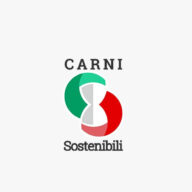
Eco-friendly cattle, not only meat: the use of blood
Inside traditional cookery books
Regarding nutrition, the use of bovine blood goes back to the dawn of time and is an ingredient that, in addition to being essential in certain periods for its high nutritional value, is the basis of many traditional recipes and local products. It is very popular in Eastern Europe, where it is used for the preparation of many types of sausages. Often bovine blood is also used as an adjuvant and binder. In fact it improves the elasticity of cooked products (especially meat and sausages), thereby improving the structure. Generally, bovine blood is separated into plasma and haemoglobin. The latter, of a dark red colour, is extremely soluble and widely used as a dye, but also as an ingredient in pet food.
Blood meal is the best organic fertiliser
Blood meal, obtained from bovine blood from the slaughterhouses and made totally safe thanks to a suitable drying and sterilisation processes, is one of the most popular organic fertilisers in agriculture and horticulture. It is very rich in nitrogen, which found in animal protein, is released in the soil in a slow and prolonged manner. The fertiliser-based blood meal, therefore, can follow the whole vegetation period of the plant. Furthermore, with bovine blood meal, the risk of nitrogen leaching by rain is virtually absent. In this biological fertiliser carbon is about 33% of the total, which is why the organic substance is able to improve both the fertility and the structure of the ground. Thanks to the presence of haemoglobin, it also provides significant amounts of free iron, which can help – a useful feature in floriculture – to improve the appearance of the plants.
Bovine blood can be transfused to humans
Bovine blood, in recent years, has become extremely important also in the medical field. While not solving the problem of lack of blood for transfusions (only one person in 30 gives blood, but well one in three will need it later in life), the stabilised haemoglobin derived from bovine blood may prove decisive in cases of health emergencies, in ambulances and in the field hospitals in the absence of compatible blood or a donor. Unlike donated blood, that of bovine origin can in fact be inoculated regardless of blood type of the patient who receives it, and can be stored without refrigeration for up to three years. In the pharmaceutical industry calf blood is also used, from which an enzyme that has a high healing power is synthesised. From bovine plasma, for the same reason, are also derived fibres for the production of healing plasters.
With bovine blood you can even make bricks, that are useful in the desert
An English architect, Jack Munro, considering bovine blood “one of the most promising materials in the world”, has created a highly innovative application for it. Mixing bovine blood with sand and preservatives and baking the resulting material for an hour at only 70 °, Munro obtained from bovine blood a waterproof brick. In reality, the use of bovine blood instead of water would make the bricks ideal to withstand the arid sub-Saharan climates. A development that could lead the building companies of those countries not to use any more construction elements particularly dangerous to health, such as the excrement of some animals. Also to save water, wherever it is scarce enough to recommend a replacement.
The foetal bovine serum safeguards cells in vitro, essential for scientific research
The foetal bovine serum contains plasma proteins, growth factors, adhesion factors, mineral salts, chelating agents, vitamins, electrolytes and other substances that promote the survival and proliferation of cells maintained in culture. In other words, it facilitates the preservation of cells in vitro, which need to reproduce the conditions of the environment that has to be analysed.





